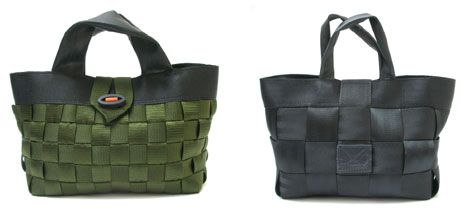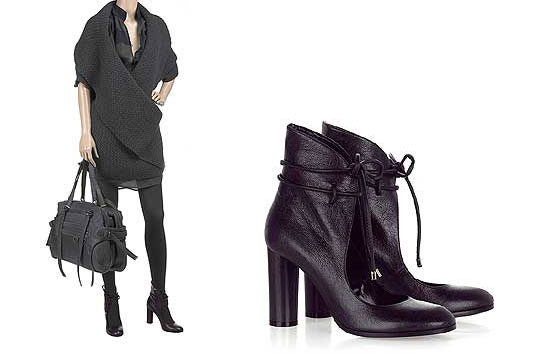At the 1.618 Sustainable Luxury conference in Paris, major players marked a turning point in the future of luxury, according to Misha Pinkhasov of Nair Safir

At the 1.618 Sustainable Luxury conference in Paris, major players marked a turning point in the future of luxury, according to Misha Pinkhasov of Nair Safir
At the 1.618 Sustainable Luxury conference in Paris, major players marked a turning point in the future of luxury, according to Misha Pinkhasov of Nair Safir.
It is a rare luxury to feel that you have been part of a moment; a subtle but profound tipping point after which nothing will ever seem the same. The 1.618 Sustainable Luxury conference in Paris on April 2 was one such moment.
Dedicated to the theme of Sustainable Sourcing and Responsible Value Chains, it was clear that the discussion of sustainable luxury has finally moved on from creating feel-good initiatives to recognizing the potential to create business value.
The first indication came during the roundtable on cosmetics, provided by Anne Cabotin, VP of both sales and sustainability for Symrise, creator of fragrances and flavors for the perfume, cosmetics and food industries.
She explained her unusual combination of roles as a reflection of the company’s intent to “integrate rather than isolate sustainability” in the value chain. Whereas sustainability is often siloed into its own department or linked to communications, the link to the sales function speaks directly of product attributes rather than positive PR topspin.
“ Sustainability is often siloed into its own department or linked to communications ”
This is important because media and messaging often distort the true nature of sustainability issues in the public mind. Laurence Hamon of Quantis, environmental assessment consultants, gave the example of concern over Nespresso capsules.
The debate over individual packaging obscures the reality that the biggest environmental footprint comes from coffee bean production, not the container. We waste the most resources when we pour a cold pot down the drain, and the individual dosing of Nespresso capsules reduces our consumption of the raw material.
Similarly, the marketing of “all-natural” or organic products highlights the health aspects while ignoring the reality of resource intensity. Done right, synthetic ingredients are not necessarily less healthy, while the innovation and increased efficiency helps keep us from devouring the planet.
“ Is sustainability a response to outside pressure, or is it a driver of creativity and innovation? ”
The jewellery panel featured a vigorous debate about the role of consumer understanding and buy-in. Charles Chaussepied, Board Director of Piaget and Vice Chair of the Responsible Jewellery Council, said that the industry is making progress on sustainability, but that consumer demand has yet to catch up and one cannot sell sustainability to customers shopping for dreams.
Dorothée Contour, founder of Jewellery Ethically Minded (JEM), disagreed. “We don’t sell jewelry as something sustainable; we sell it as something beautiful,” she acknowledged, but luxury brands are meant to lead the customer and a cleaner, fairer world is a legitimate part of the consumer dream.
JEM has made it part of their business model, a criteria they must accommodate in their allocation of resources. “Sustainability is something we do for our own sense of well being, it is our mission and motivation, and it is our job is to make it profitable.”

Handbags made from recycled materials, by Worn Again
The difference between these two approaches comes down to company culture and brand values, which ultimately determine the depth and sincerity of sustainability initiatives. Is sustainability a response to outside pressure, or is it a driver of creativity and innovation?
Marie-Claire Daveu, Chief Sustainability Officer at Kering, argued that it is the latter during the fashion roundtable, which played to a packed audience. She echoed the words of Kering’s chairman François-Henri Pinault that sustainability is an obligatory part of quality, which luxury brands brandish as their differentiator from the mass market.
At Kering, sustainability is not seen as a constraint but as an impetus to improve performance in all areas. To that end, the group’s brands have been working towards an ambitious set of sustainability targets for 2016. Next year, Kering will also release their Environmental Profit and Loss (EP&L;) accounting, a financial measure of their environmental footprint.
“ Sustainability is an obligatory part of quality, according to Kering ”
On the same day as the 1.618 conference, in New York, Pinault announced that Kering would make the EP&L; methodology available to any company that asks for it. “If we keep it [secret] as a competitive advantage, we completely miss the point!” he said. In addition, Daveu announced the start of Kering’s collaboration with Worn Again to create a circular textile supply chain via fabric recycling.
“There is an avalanche of change coming from consumers grown tired of a fashion industry that puts people at the margins,” said Simone Cipriani, Head of the International Trade Centre’s Ethical Fashion Initiative.
“A generation or two ago artisans were at the heart of the process, now they have been pushed aside by competitive pressures and the marketing swirl of shows and celebrity.” To achieve quality and maintain customer engagement, fashion companies must put people back into the equation.
“ Despite all the good intentions, sustainability still has an image problem ”
Dilys Williams, Director of the Centre for Sustainable Fashion, offered a bright perspective in this regard. While designers, particularly young designers, have in the past been dismissive of the creative constraints imposed by sustainability, she said that, to the contrary, the generation now in training is excited by them, seeing an opportunity to create something even more valuable by solving a problem.
It is affirmation of the widely held belief that Millennials hold sustainability close to heart and that this value will push society through today’s hurdles toward a brighter future.
For it is true that despite all the good intentions, sustainability still has an image problem, particularly when it comes to luxury. To many, sustainability still means slower, more complicated, less materially satisfying, less profitable. This makes the notion of sustainable luxury seem like a paradox.

Non-leather products from Stella McCartney
But by luxury is not only about self-indulgence. It achieves that indulgence through leadership: by being the best in its product category and offering consumers something outside of their ordinary experience. Throughout history, luxury has been a conduit for new paradigms and progress.
Whether in the trade of exotic goods between ancient empires, or the introduction of technological and social innovations to broader society, luxury is about driving people toward new possibilities by making them beautiful, desirable, even fun. If sustainability is today’s new paradigm, rather than trying to accommodate it, luxury firms must work to elevate it.
And, indeed, it seems they are starting to. “If a company is going to last 100 years,” said Symrise’s Anne Cabotin, “it must be sustainable by definition: environmentally, socially, and financially as well.”
To further investigate sustainability on Luxury Society, we invite your to explore the related materials as follows:
– Gucci Steps Towards Sustainability
– Luxury Watchmakers Focus on Sustainability
– Thoughtful Luxury Should be a Lifestyle, Not an After-Thought










